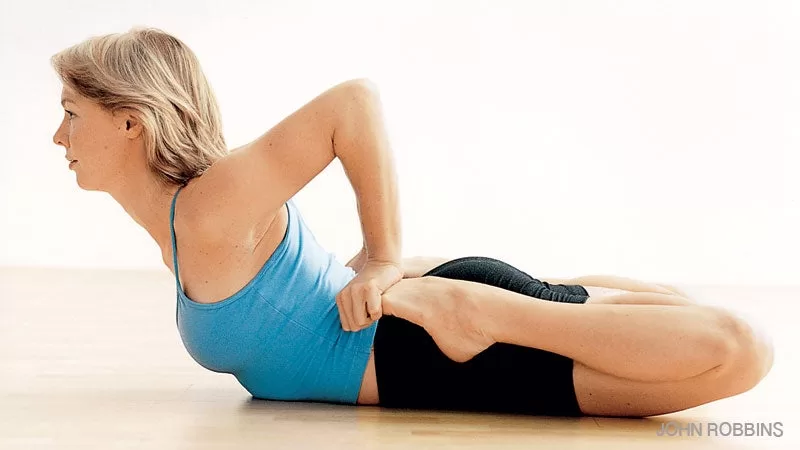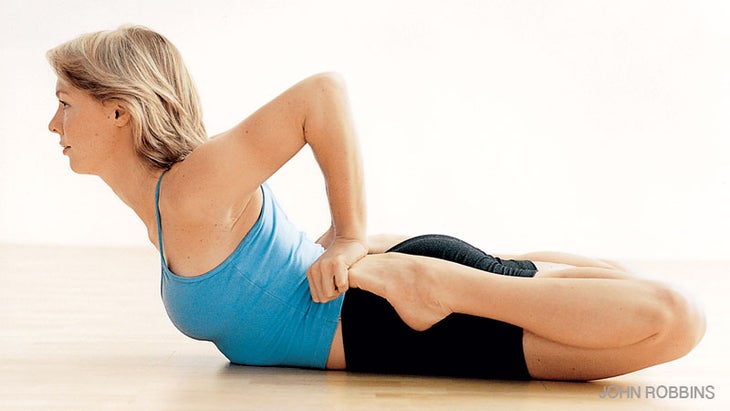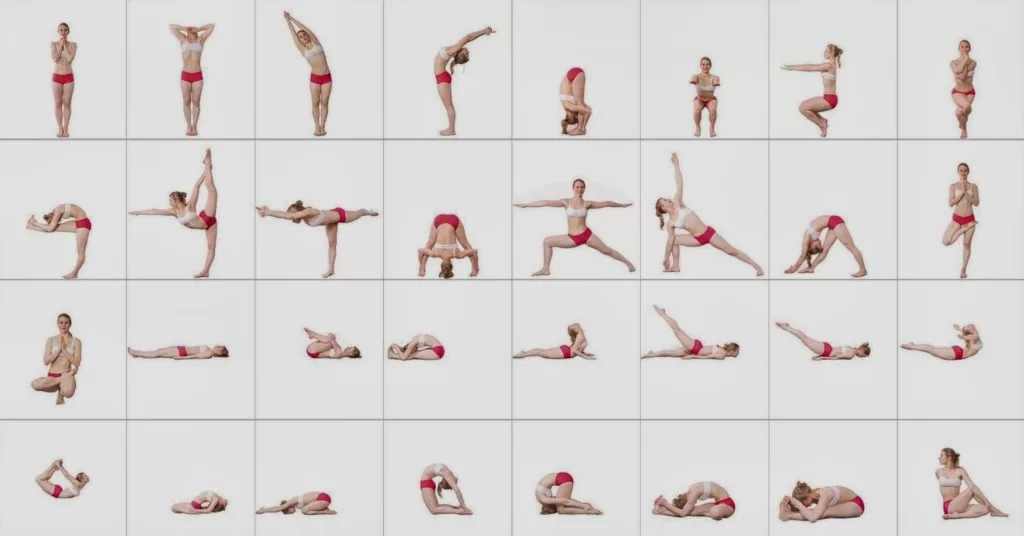
Why Do My Muscles Shake During Yoga?
Yoga is a popular form of exercise that has been practiced for thousands of years. It is well known for its numerous health benefits, such as increased flexibility, improved balance, reduced stress and anxiety, and better overall physical and mental health. However, many yoga practitioners often experience muscle shaking during their practice, which can be a source of confusion and concern. In this article, we will explore the reasons behind this phenomenon and what it means for your yoga practice.
Muscle shaking during yoga is a common occurrence, especially for beginners or those who are trying out new poses or sequences. It can be caused by a variety of factors, including muscle fatigue, nervousness or excitement, and even dehydration. Understanding why your muscles shake during yoga can help you tailor your practice to your body’s needs, improve your technique, and ultimately enhance your overall yoga experience. So if you’ve ever wondered why your muscles shake during yoga, keep reading to find out!
Muscle shaking during yoga can occur due to muscle fatigue, lack of hydration, or muscle imbalances. It can also be a sign of progress as the body adapts to new movements and challenges. Shaking can also be caused by holding poses for too long or pushing beyond your limits. Ensure you are properly hydrated and listen to your body to prevent injury.

Why Do My Muscles Shake During Yoga?
Yoga is an exercise that offers numerous benefits to the body, including increased flexibility, strength, balance, and relaxation. However, when you first start practicing yoga, you may experience muscle shaking. This can be an uncomfortable and confusing sensation, especially if you are unsure why it is happening. In this article, we will explore the reasons why your muscles shake during yoga and what you can do to reduce or eliminate this sensation.
1. Muscle Fatigue
When you hold a yoga pose for an extended period, your muscles may start to tire out, leading to muscle shaking. This is because your muscles are working hard to maintain the pose, and as they become fatigued, they may start to tremble. This is a natural response and a sign that your muscles are working hard. However, if the shaking becomes too intense or lasts for an extended period, it may be a sign that you need to take a break or modify the pose.
One way to reduce muscle fatigue during yoga is to build up your strength gradually. Start with beginner-level poses and gradually work your way up to more challenging ones. This will give your muscles time to adapt and become stronger, reducing the likelihood of muscle fatigue and shaking.
2. Lack of Warm-Up
Another reason why your muscles may shake during yoga is that you may not be properly warmed up. When you start any exercise or physical activity, it is essential to warm up your muscles to get them ready for the activity. If you jump right into yoga poses without warming up, your muscles may not be ready for the activity, leading to muscle shaking.
To reduce muscle shaking due to a lack of warm-up, make sure to spend at least 5-10 minutes warming up your muscles before starting yoga. You can do some gentle stretches or a few sun salutations to get your muscles ready for the activity.
3. Overexertion
Another reason why your muscles may shake during yoga is that you may be overexerting yourself. When you push yourself too hard, your muscles may start to shake as they try to keep up with the activity. This can be a sign that you need to take a break or modify the pose to reduce the intensity.
To avoid overexertion during yoga, make sure to listen to your body and take breaks when you need them. Don’t push yourself too hard, especially if you are just starting with yoga. Gradually build up your strength and flexibility over time, and you will be able to do more challenging poses without experiencing muscle shaking.
4. Improper Breathing
Breathing is an important component of yoga, and improper breathing can lead to muscle shaking. When you hold your breath or breathe shallowly, your muscles may not be getting enough oxygen, leading to muscle fatigue and shaking.
To reduce muscle shaking due to improper breathing, make sure to focus on your breath during yoga. Breathe deeply and evenly, inhaling through your nose and exhaling through your mouth. This will ensure that your muscles are getting enough oxygen and reduce the likelihood of muscle shaking.
5. Lack of Hydration
Dehydration can also lead to muscle shaking during yoga. When you are dehydrated, your muscles may not be getting enough water, leading to muscle fatigue and shaking.
To avoid muscle shaking due to dehydration, make sure to drink plenty of water before and during your yoga practice. Aim for at least 8-10 glasses of water per day to keep your muscles hydrated and healthy.
6. Underlying Medical Conditions
In some cases, muscle shaking during yoga may be a sign of an underlying medical condition. Conditions such as Parkinson’s disease or multiple sclerosis can cause muscle tremors, which may be exacerbated during physical activity.
If you are experiencing muscle shaking during yoga and are concerned about an underlying medical condition, it is essential to speak with your doctor. They can perform a physical examination and recommend any necessary tests or treatments.
7. Benefits of Muscle Shaking
While muscle shaking during yoga can be uncomfortable, it can also be beneficial for your body. Muscle shaking can help to release tension and stress in the muscles, allowing them to relax and become more flexible. It can also improve circulation and increase blood flow to the muscles, promoting healing and recovery.
8. Vs. Muscle Twitching
It is important to note that muscle shaking is different from muscle twitching. Muscle twitching is a sudden, involuntary movement of the muscle, and can be a sign of a more serious medical condition. Muscle shaking, on the other hand, is a natural response to physical activity and is not typically a cause for concern.
If you are experiencing muscle twitching during yoga, it is essential to speak with your doctor to rule out any underlying medical conditions.
9. How to Reduce Muscle Shaking
If you are experiencing muscle shaking during yoga and find it uncomfortable, there are several things you can do to reduce or eliminate the sensation. These include:
– Take breaks when needed and modify the pose to reduce intensity
– Build up your strength gradually over time
– Focus on your breathing and make sure to breathe deeply and evenly
– Drink plenty of water before and during yoga to stay hydrated
– Warm up your muscles before starting yoga
10. Conclusion
Muscle shaking during yoga can be an uncomfortable sensation, but it is a natural response to physical activity. By understanding the reasons why your muscles may be shaking and taking steps to reduce or eliminate the sensation, you can enjoy the many benefits of yoga without discomfort. Remember to listen to your body, take breaks when needed, and gradually build up your strength and flexibility over time. With practice and patience, you can achieve a peaceful and fulfilling yoga practice.
Frequently Asked Questions
In yoga, it is common to experience muscle shaking or trembling during certain poses. Here are some frequently asked questions to help you understand why this happens.
Why do my muscles shake during yoga?
Shaking or trembling during yoga is a natural response of the body as it tries to maintain balance and stability. When you hold a pose for an extended period of time, your muscles start to fatigue and may begin to shake. This is actually a good sign because it means your muscles are working and getting stronger.
The shaking can also be a result of the body releasing tension or emotion that has been stored in the muscles. If you notice shaking happening consistently in certain poses, it may be an indication that you need to work on strengthening those particular muscles.
Is muscle shaking during yoga normal?
Yes, muscle shaking during yoga is completely normal and even expected. It’s a sign that your muscles are working hard and adapting to the demands of the practice. However, if the shaking is accompanied by sharp pain, you should ease out of the pose and consult with your teacher to ensure proper alignment and adjustments.
Remember that yoga is a practice of listening to your body and working within your limits. If the shaking becomes too intense or uncomfortable, you can always take a break, come out of the pose, or modify it to suit your needs.
Can muscle shaking be prevented during yoga?
While muscle shaking is a natural response of the body, there are some things you can do to minimize it during your practice. First, make sure you are properly warmed up before attempting more challenging poses. This can help prevent muscle fatigue and reduce the likelihood of shaking.
Additionally, focusing on your breath and maintaining a steady, calm breath can help calm the nervous system and reduce muscle tension. Finally, practicing regularly and consistently can help improve muscle strength and endurance over time, leading to less shaking and more stability in your practice.
Should I push through muscle shaking during yoga?
While muscle shaking is a normal response of the body, it’s important to listen to your body and not push beyond your limits. If the shaking becomes too intense or uncomfortable, it’s perfectly okay to ease out of the pose or take a break.
Remember that yoga is not about achieving the perfect pose, but rather about cultivating awareness and connection with your body. By honoring your limits and practicing with mindfulness and compassion, you can build strength and stability in your practice over time.
How long does muscle shaking last during yoga?
The duration of muscle shaking during yoga can vary depending on the individual and the pose being practiced. Some people may experience only a few seconds of shaking, while others may shake for several minutes. As long as the shaking is not accompanied by sharp pain or discomfort, there is no need to worry.
If you notice that the shaking is persistent and happening consistently in certain poses, it may be an indication that you need to work on strengthening those particular muscles. Remember that yoga is a practice of patience and persistence, so be gentle with yourself and trust the process.
NEVER Stop Your Exercise When You Start Shaking | Physical Therapist Explains Why Muscles Twitch
In conclusion, the shaking of muscles during yoga is a natural and common phenomenon that can occur for various reasons. It is not a sign of weakness or lack of ability, but rather an indication of the body’s response to the practice. Through the process of holding poses and deep breathing, the body is working to release tension and build strength, which can cause muscles to shake.
As a professional writer, I would recommend embracing the shaking as a sign of progress and growth in your yoga practice. It is important to listen to your body and only push yourself to a comfortable level, as forcing the body into positions it is not ready for can lead to injury. By practicing regularly and staying attuned to your body’s signals, you can continue to build strength and flexibility, and reduce the frequency of muscle shaking during yoga.

